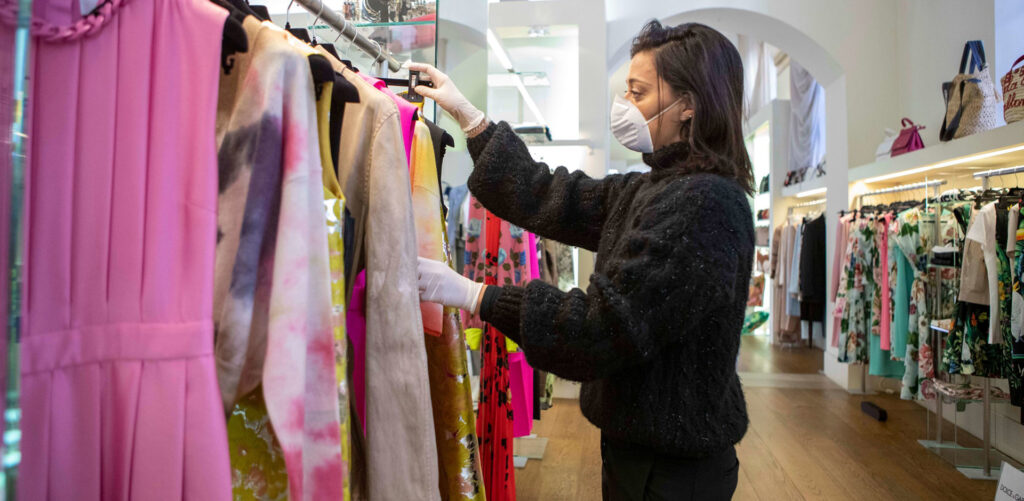The coronavirus has changed our world, perhaps permanently, and is having a profound impact on our consumer habits. People are going back to the essentials and focusing on what matters the most to them. Others are trying to find a middle ground and carry on some of their old habits while adapting them to their new reality.
The fashion industry has been feeling the crunch due to the closings of retail stores, restrictions, and issues affecting the global supply chain. However, many are also finding ways to change their business models to face these new challenges. Let’s take a look at how the coronavirus is affecting the high fashion industry.
Online Retailers are Flourishing
Retailers who had a strong online presence before the pandemic are those who were able to better withstand these challenges. While some high street retailers have been all but shut down, online retail have been flourishing during this period.
One example is SSENSE, which is among the top fashion e-commerce retailers. They are known for their wide selection of Versace items and if you look for Versace at SSENSE, you’ll see that they offer everything from t-shirts to accessories and footwear. They also carry all sorts of designer brands from Saint Laurent, Givenchy to Gucci, and are able to send these items directly to your door.
The truth is that many high-end fashion houses have been reluctant to accept the online model for a while, and privilege the boutique experience. These fashion houses will have no choice but to think about solutions not only to stay afloat but be prepared for future events. Then there’s the clientele who will naturally continue to gravitate towards online options or those who will become adepts after trying.
The fashion industry is also one that relies heavily on physical retail. But with stores going extinct and changing consumer retail habits, this is bound to change. Around 80% of retailers relied on physical sales up until now, but we can’t see a world where this could be possible now.
Diversifying the Supply Chain
The other issue the industry has been forced to face is the issue of having too centralized a supply chain. Some of the major houses either moved their whole production to China or sourced most of their materials from there. We can easily see now how this can be an issue, but that was unforeseeable before this one-of-a-kind black swan event. Even those who didn’t source from China had to deal with issues affecting some of their suppliers who did.
This has forced many fashion houses to reconsider their choice of suppliers and their diversity. New players like Taiwan, India, or Mexico are now being looked at as back up options. Mexico, in particular, with its strong manufacturing industry and ready access to the North American market, makes it a prime candidate.
Cocooning is Having an Effect on Sales
The industry also has to deal with the fact that their customers’ lifestyle habits have been forced to change, and some might continue on well after the pandemic is behind us. We can expect more to embrace home living, and this will affect the world of fashion.
“No one wants to buy clothes to stay at home,” said Simon Woflson, a top executive at Next. And he may be right. Fashion is highly social in nature, and while we can’t expect people to stop buying clothes altogether, we can definitely see a situation where they would be less inclined to.
We’re already seeing a decrease in demand, and while we don’t know if it was caused by restrictions alone, we can confidently assume that sales aren’t going to pick back up overnight. There are also the psychological effects of the crisis. More people are focusing on investments and looking at stores of value rather than shopping for the latest clothes at the moment, which is having an effect on the luxury market. Only those who can position themselves to reach today’s customers and offer the best experience will be able to survive and thrive past the pandemic.
However, this doesn’t mean that this trend comes without opportunities. As a matter of fact, Browns just reported an 80% increase in loungewear. Those who will be able to appeal to this trend might have a way to position themselves favorably in the market and capitalize on it. Creativity will be essential, and knowing how to adapt and embrace the changing needs of customers will also become essential for brands who want to stay afloat.
There is no doubt that the coronavirus is having an unprecedented effect on the high fashion industry. However, there is still hope, and those who were and are prepared for change could emerge as new leaders and transform the current landscape. (guest post)
